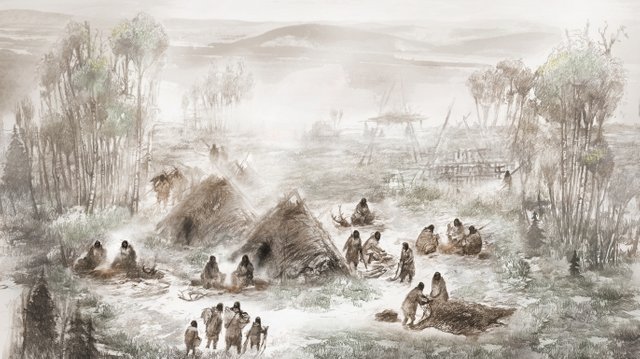DNA from Ice Age Baby Uproots Native American Family Tree

DNA analysis of a six-week-old baby girl, buried some 11,500 years ago in what is now Alaska, has identified her as a member of a previously unknown Native American population. The discovery strongly supports the theory that the Americas were settled by people from Siberia, and presents scientists with the genetic key to better understanding how ancient humans migrated to North America from Asia.
Since 2006, archaeologists have been excavating the site known as Upward Sun, in the Tanana River Valley in central Alaska, where short-term human settlements seem to have popped up periodically over thousands of years. In 2010, a team from the University of Alaska Fairbanks found human bones there, including the cremated remains of a three-year-old child on top of an ancient hearth.
When they later dug into the hearth, scientists discovered the remains of two infants: a six-week-old girl they called Xach’itee’aanenh T’eede Gaay, or “sunrise girl-child” in the local dialect, Middle Tanana; and a younger child, possibly a fetus, whom they dubbed Yelkaanenh T’eede Gaay, or “dawn twilight girl-child.”
Now, as part of a new study published this week in the journal Nature, an international team of archaeologists and geneticists has reconstructed the entire genome of the older girl. At some 11,500 years old, hers is the second-oldest human genome found in North America. While the scientists expected the baby girl’s DNA to belong to one of the two known branches of Native American ancestry (northern and southern), they instead found a different genetic code, which marked Xach’itee’aanenh T’eede Gaay as a member of a previously unknown lineage.
“We didn’t know this population existed,” Ben A. Potter, a professor of anthropology at the University of Alaska Fairbanks and one of the lead authors of the new study, said of the study’s findings.
Potter and his co-authors believe the newly discovered group, the Ancient Beringians, split off from other Native American ancestors some 20,000 years ago, around the time many scientists believe the first humans made their way from Asia to North America. Beringia is the name used to refer to Alaska, the tip of Siberia and the land bridge that connected them during the last ice age.
Probably many people from many places came to north America at many times and from different directions.